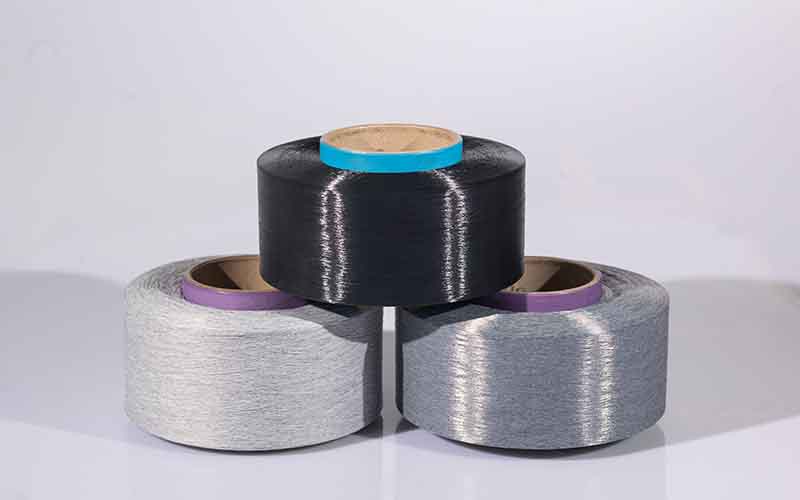
How Conductive Threads Protect Your Electronics
2025-08-27 22:52
Walk into any modern electronics factory or research lab, and you’ll notice something unusual: people wearing what look like ordinary lab coats, gloves, and shoes, but which are in fact sophisticated engineered garments made with conductive yarns. These are not fashion items——prevent static electricity from destroying sensitive circuitry, disrupting experiments, or causing explosions.
This is the world of conductive yarns: materials that look and feel like thread, but behave like flexible, washable, knittable wires. Their development and production require advanced know-how, and their correct use is essential in high-tech sectors.
How Conductive Yarns Actually Work
At its core, a conductive yarn is a hybrid material. It merges the flexibility and durability of traditional textiles (like polyester or nylon) with the electrical properties of a metal or carbon.
There are two primary ways to make them:
Intrinsically Conductive Fibers: These are pure metal filaments (like stainless steel or silver) or carbon-based fibers, drawn incredibly thin. A single strand of high-quality stainless steel conductive yarn can be finer than a human hair yet strong enough to be knitted at high speeds on industrial machines.
Coated or Filled Fibers: Here, a standard textile fiber (e.g., cotton or polyester) is either coated with a conductive polymer (like PEDOT:PSS) or a layer of metal (like silver), or its inner structure is infused with carbon particles.

The key measurement is surface resistivity, which defines how easily an electrical charge can travel along the yarn’s surface. Yarns are engineered to be either:
Conductive (very low resistance, < 1,000 Ω/sq): For actively carrying a signal or creating a strong shield.
Static Dissipative (higher resistance, typically 10^5 to 10^9 Ω/sq): For safely slowing down and draining a static charge to the ground. This is the most common type for ESD protection.
A Day in an Electronics Factory: The Yarn in Action
To understand its value, let's follow a technician, Anna, at a semiconductor assembly plant.
8:00 AM: Anna enters the Electrostatic Discharge Protected Area (EPA). Before she touches anything, she dons her ESD smock. This isn't a simple cotton coat. It’s knit with a grid of carbon-based conductive yarns. This grid acts as a "Faraday cage" for her body, preventing any static charge on her street clothes from influencing the ultra-sensitive microchips on the line.
8:15 AM: She attaches her conductive wrist strap. The strap itself is made from a soft, elastic band woven with conductive threads. This band makes constant skin contact, while a coiled cord (often containing more conductive yarns) connects her to a grounded point, safely draining any charge she generates.
9:30 AM: Anna begins assembling circuit boards. She wears finger cots (miniature gloves) made from a nitrile material embedded with conductive micro-fibers. This allows her to handle the tiny components without leaving fingerprints or—critically—transferring a static shock that could fry a transistor without her even feeling it.
11:00 AM: She needs to clean an optical sensor. She reaches for a specialized wipe. This wipe looks like a soft cloth, but it’s non-linting and woven with static-dissipative yarns. An ordinary paper towel would generate a massive static charge when rubbed, dooming the component. This specialized wipe cleans safely.
1:00 PM: Finished boards are placed into shielded storage bags. These bags aren't just plastic; they have a layer woven from conductive yarns that blocks external static fields, protecting the contents during transport and storage.
At every single step, conductive yarns form an invisible protective ecosystem, seamlessly integrated into the textiles that workers and products interact with daily.
The Manufacturing Imperative: Why Quality is Non-Negotiable
For these applications to work, the conductive yarn cannot fail. A single break in the conductive pathway in an ESD glove renders it useless, creating a false sense of security. The manufacturing of these yarns requires precision engineering:
Consistency: Every single meter of yarn must have the exact same electrical properties.
Durability: It must withstand repeated washing, abrasion, stretching, and exposure to chemicals without degrading its conductivity.
Processability: It must run smoothly on standard industrial knitting, weaving, and sewing machines without breaking or fraying.
This is where specialization is paramount. Not all yarn producers can achieve this level of quality and reliability.
CJTI is a manufacturing factory that specializes in turning this advanced material science into reliable, high-performance products. We deeply understand the technical requirements of industries where failure is not an option. Our focus is on producing conductive yarns and fabrics that offer consistent electrical properties, exceptional durability, and seamless integration into your production processes. From ESD protection to smart textile innovation, CJTI provides the foundational materials that trusted brands depend on.












